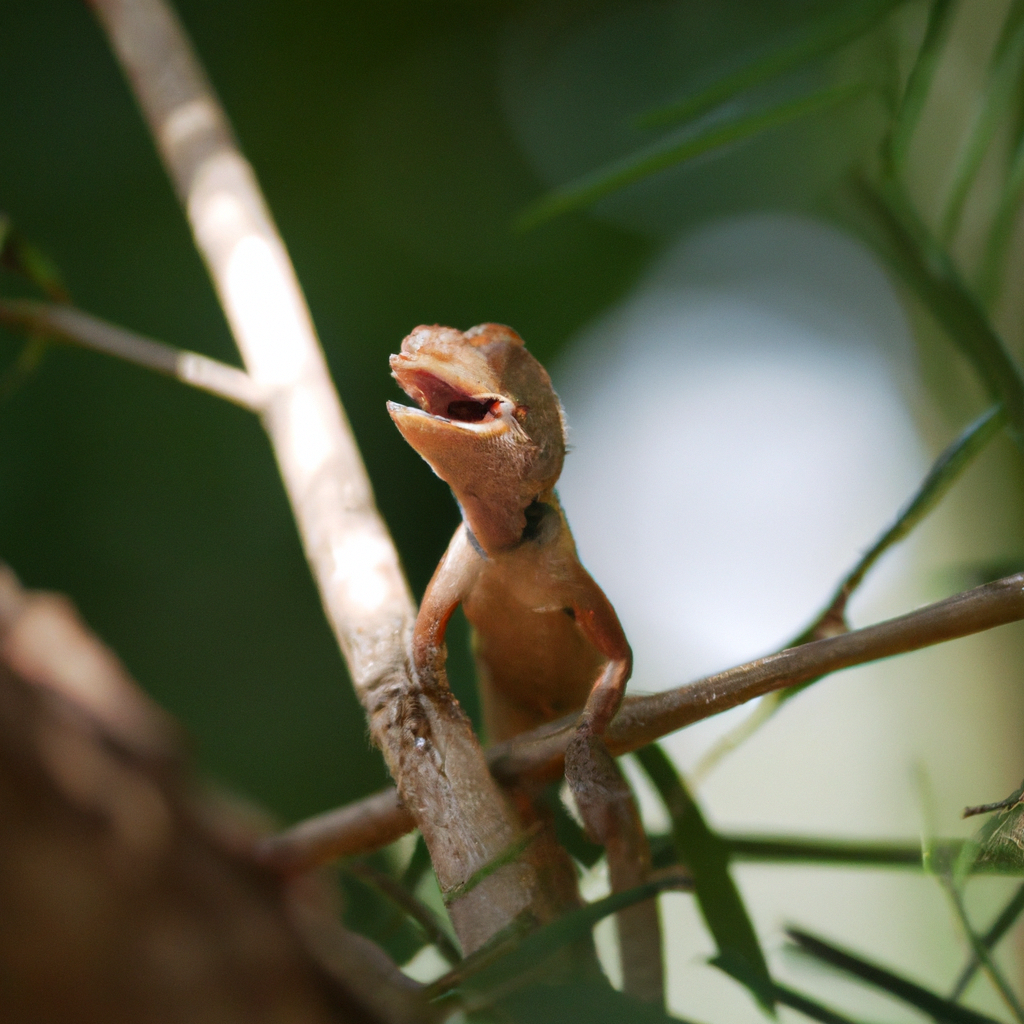Introduction to Lizard Vocalizations and Communication
Lizards are fascinating creatures known for their unique behaviors and communication methods. Understanding lizard vocalizations and communication is crucial in unraveling the mysteries of these reptiles’ social interactions and survival strategies. Lizards use a variety of sounds and signals to convey messages to one another, ranging from hisses and chirps to clicks and tail vibrations.
By delving into the world of lizard communication, researchers and enthusiasts gain valuable insights into the intricate ways in which these creatures interact with their environment and each other. Vocalizations play a key role in establishing territories, attracting mates, warning of danger, and expressing aggression or submission.
Moreover, studying lizard communication can shed light on the evolutionary adaptations that have shaped their behaviors over millions of years. Different species of lizards have developed unique vocalization patterns suited to their specific habitats and lifestyles, highlighting the diversity and complexity of communication within the reptilian world.
For those interested in herpetology or wildlife observation, learning about lizard vocalizations offers a deeper appreciation for the natural world and the interconnectedness of all living beings. Whether listening to the calls of geckos in tropical rainforests or observing the head-bobbing displays of anoles in suburban gardens, the study of lizard communication provides a window into the hidden language of these often misunderstood creatures.
Importance of Understanding Lizard Communication
Understanding the intricacies of lizard communication is essential for researchers, conservationists, and reptile enthusiasts alike. By delving into the world of lizard vocalizations and communication, we gain valuable insights into their behavior, social interactions, and survival strategies.
Lizards use various forms of communication to convey messages to their counterparts. These signals can range from visual displays, such as body postures and color changes, to tactile cues and chemical signals. However, vocalizations play a crucial role in the communication repertoire of many lizard species.
The importance of understanding lizard communication lies in deciphering the messages they convey through vocalizations. These sounds can indicate territorial boundaries, mating readiness, aggression, or alarm signals. By studying the context and patterns of lizard vocalizations, researchers can unravel the complexities of their social dynamics and ecological relationships.
Moreover, gaining insights into lizard communication can help researchers better understand the impacts of environmental changes on their behavior. Climate change, habitat loss, and human disturbances can disrupt communication patterns among lizard populations, leading to potential consequences for their survival and reproduction.
Overall, delving into the realm of lizard vocalizations and communication offers a fascinating glimpse into the hidden world of these reptiles. By appreciating the nuances of their vocalizations and the messages they convey, we can deepen our understanding of lizard behavior and contribute to their conservation and well-being in the wild.
Types of Vocalizations in Lizards
Lizards are fascinating creatures that use various types of vocalizations to communicate with each other and their environment. One common type of vocalization in lizards is the hiss, which is often used as a warning signal to deter potential threats or predators. The hiss is produced by expelling air rapidly through the mouth, creating a sharp, hissing sound that can startle or intimidate predators.
Another type of vocalization seen in lizards is the chirp, which is a high-pitched sound used for a variety of purposes such as attracting mates, establishing territory, or signaling distress. Chirping sounds can vary in frequency and duration, depending on the species of lizard and the context in which the vocalization is made.
Some lizards also use clicks and pops as part of their communication repertoire. These short, sharp sounds are often used in social interactions between individuals or as a means of signaling aggression or submission. Clicks and pops can convey important information about the lizard’s emotional state, intentions, or warnings to other members of their species.
In addition to these vocalizations, certain lizards are known to produce more complex sounds such as trills, barks, or whistles. These sounds may serve specific functions in communication, such as attracting a mate during the breeding season or coordinating group activities within a social structure.
Overall, the diverse range of vocalizations used by lizards highlights the complexity of their communication systems and the importance of sound in their interactions with the world around them. Studying and understanding these vocalizations can provide valuable insights into lizard behavior, ecology, and evolutionary adaptations.
How Lizards Use Communication in the Wild
In the wild, lizards use communication as a vital tool for various purposes such as mating, territorial defense, and warning signals. Understanding how lizards communicate in their natural habitat can provide valuable insights into their behavior and social dynamics.
For instance, male lizards often vocalize to attract potential mates during the breeding season. By producing specific calls or displays, they can signal their presence and fitness to nearby females. This communication plays a crucial role in the reproductive success of lizards and influences the overall dynamics of their populations.
Lizards also use vocalizations for territorial defense, especially among males competing for resources or mates. By vocalizing or displaying aggressive behaviors, lizards can establish and defend their territories from intruders. These communication signals help maintain social hierarchies and reduce conflicts within lizard communities.
Moreover, lizards may emit warning calls or sounds to alert others of potential threats or predators in the environment. These alarm signals can trigger defensive behaviors or prompt group responses to evade danger. By interpreting these vocalizations, lizards can effectively communicate and cooperate to ensure their survival in the wild.
Overall, the communication strategies employed by lizards in their natural habitat are diverse and essential for their survival and reproduction. Studying how lizards use vocalizations to convey messages and interact with each other can offer valuable insights into their social structures, ecological roles, and evolutionary adaptations.
Factors Affecting Lizard Vocalizations
The vocalizations of lizards can be influenced by a variety of factors that play a role in how and why these creatures communicate through sound. One key factor is the species of lizard, as different species may have distinct vocalization patterns and communication styles. For example, some lizards may produce high-pitched chirps, while others may emit low-frequency grunts or hisses.
Environmental conditions also play a significant role in affecting lizard vocalizations. Factors such as temperature, humidity, and habitat type can impact the frequency and intensity of vocalizations produced by lizards. Lizards may adjust their vocalizations in response to environmental changes to effectively communicate with others and adapt to their surroundings.
Social interactions among lizards can also influence their vocalizations. Lizards may use vocalizations to establish territories, attract mates, or warn off potential predators. The presence of other lizards in the vicinity can trigger specific vocalizations as a form of communication within the group.
Additionally, the time of day and season can affect lizard vocalizations. Some species of lizards may be more vocal during certain times of the day, such as dawn or dusk, while others may exhibit seasonal variations in their vocalization patterns related to breeding or foraging activities.
By understanding the various factors that can influence lizard vocalizations, researchers and enthusiasts can gain valuable insights into the complex communication systems of these fascinating reptiles. Studying the interplay of species, environment, social dynamics, and temporal patterns can provide a deeper appreciation for the diversity and significance of lizard vocalizations in the natural world.
Research on Lizard Communication Patterns
Research on Lizard Communication Patterns has shed light on the diverse ways in which these fascinating creatures interact with each other. Scientists have discovered that different species of lizards exhibit unique vocalization patterns that serve various communication purposes. Through field studies and controlled experiments, researchers have been able to identify specific calls, chirps, and other sounds that lizards use to convey messages such as territorial warnings, mating calls, and distress signals.
Studies have also explored the role of body language and visual cues in conjunction with vocalizations to better understand the complex communication systems of lizards. By observing the behaviors of lizards in their natural habitats and in controlled environments, researchers have been able to decipher the meanings behind different vocalizations and gestures, providing valuable insights into the social dynamics of lizard populations.
Furthermore, advances in technology, such as high-resolution audio recordings and sophisticated data analysis techniques, have enabled scientists to capture and analyze the intricate details of lizard vocalizations with greater precision. This has led to significant advancements in our understanding of the acoustic properties of lizard calls and the intricate mechanisms by which these sounds are produced and perceived by conspecifics.
Overall, the research on lizard communication patterns underscores the importance of studying animal behavior and vocalizations in order to gain a deeper appreciation for the complexities of the natural world. By continuing to investigate and document the communication strategies of lizards and other species, scientists can further unravel the mysteries of the animal kingdom and contribute to conservation efforts aimed at preserving biodiversity.
How Humans Can Interpret Lizard Vocalizations
Understanding and interpreting lizard vocalizations can provide valuable insights into their behavior and social interactions. While it may seem challenging to decipher the meaning behind these sounds, there are certain cues that humans can look for to better understand lizard communication patterns.
One key aspect to consider is the context in which the vocalizations occur. Lizards may produce different sounds depending on whether they are expressing aggression, mating behavior, or distress. By observing the body language and actions of the lizards alongside their vocalizations, researchers and enthusiasts can start to piece together the meaning behind the sounds.
Additionally, the frequency, duration, and intensity of the vocalizations can offer clues about the lizard’s emotional state and the message they are trying to convey. For example, a series of short, rapid chirps may indicate alarm or warning, while long, sustained calls could be a sign of territorial defense.
Furthermore, studying the responses of other lizards to vocalizations can help in understanding the social dynamics within a lizard population. Lizards may use vocalizations to establish dominance, attract mates, or communicate warnings to conspecifics. By observing how different individuals react to specific vocalizations, researchers can gain insights into the complexity of lizard communication systems.
Overall, while deciphering lizard vocalizations may require careful observation and interpretation, it can be a rewarding endeavor that sheds light on the fascinating world of these reptiles. By honing our ability to interpret lizard vocalizations, we can deepen our appreciation for the intricacies of their communication and gain a greater understanding of their behavior in the wild.
Conservation Implications of Lizard Communication
Understanding the communication patterns of lizards has significant conservation implications. By studying how lizards use vocalizations to interact and convey messages within their ecosystems, researchers can gain valuable insights into the health and dynamics of these environments. Lizard vocalizations can provide information about species diversity, population densities, mating behaviors, and territorial disputes. Monitoring and interpreting these vocal signals can help conservationists assess the overall well-being of lizard populations and the habitats they inhabit.
Furthermore, understanding lizard communication can aid in the development of targeted conservation strategies. By recognizing the specific vocalizations associated with stress, mating calls, or alarm signals, conservationists can tailor their efforts to address the most pressing needs of lizard populations. For example, if certain vocalizations indicate habitat degradation or human disturbances, conservation initiatives can be implemented to mitigate these threats and promote the recovery of affected lizard species.
Additionally, the conservation implications of lizard communication extend beyond the species themselves. Lizards play important roles in various ecosystems as prey for predators, seed dispersers, and pest controllers. By safeguarding lizard populations through effective conservation measures informed by their communication patterns, we can help maintain the balance and resilience of entire ecosystems.
In conclusion, studying lizard vocalizations and communication is essential for effective conservation efforts. By recognizing the significance of these signals and their implications for ecosystem health, we can work towards preserving the diversity and vitality of lizard populations and the environments they inhabit.
Tips for Observing Lizard Communication in Nature
Observing lizard communication in nature can be a fascinating and rewarding experience for nature enthusiasts and researchers alike. To effectively observe and interpret lizard vocalizations, it is essential to be patient and attentive to the subtle cues that these creatures use to communicate. One tip for observing lizard communication is to familiarize yourself with the typical vocalizations of the species you are observing. Different lizard species may use a variety of sounds, such as chirps, hisses, and clicks, to convey different messages.
Another important aspect of observing lizard communication is to pay attention to the body language and visual signals that accompany vocalizations. Lizards often combine vocalizations with specific postures, movements, and color changes to enhance their communication signals. By observing these visual cues along with vocalizations, you can gain a more comprehensive understanding of the messages being conveyed.
When observing lizard communication in nature, it is crucial to respect the natural behavior of these animals and maintain a safe distance to avoid disturbing them. Using binoculars or a camera with a zoom lens can help you observe lizards from a distance without causing them stress or altering their behavior.
Overall, observing lizard communication in nature can provide valuable insights into the social dynamics, territorial behaviors, and mating rituals of these fascinating reptiles. By following these tips and approaches, you can enhance your appreciation for the complexity of lizard vocalizations and gain a deeper understanding of their communication patterns in the wild.
Conclusion: Appreciating the Complexity of Lizard Vocalizations
Observing and understanding lizard vocalizations can offer insights into the intricate communication systems of these fascinating creatures. Lizard vocalizations vary greatly across species, with each sound serving a specific purpose in their communication repertoire. By delving into the nuances of these vocalizations, researchers and enthusiasts can gain a deeper appreciation for the complexity of lizard communication.
Lizards use vocalizations to convey a range of messages, including territorial warnings, mating calls, distress signals, and social interactions. These vocalizations can be subtle chirps, hisses, clicks, or more elaborate calls, depending on the species and context. By listening closely to these sounds and observing the accompanying behaviors, researchers can decipher the meaning behind each vocalization.
Studying lizard vocalizations also sheds light on the environmental factors that influence communication patterns. Factors such as temperature, humidity, predator presence, and social dynamics can all impact the frequency and intensity of vocalizations in lizards. By understanding how these external factors shape communication behaviors, researchers can gain a more comprehensive understanding of lizard vocalizations in their natural habitats.
Appreciating the complexity of lizard vocalizations extends beyond scientific inquiry—it also offers a window into the rich tapestry of behaviors and interactions that define these creatures’ lives. By taking the time to observe and interpret lizard vocalizations, we can deepen our connection to the natural world and marvel at the intricate ways in which these creatures communicate.




